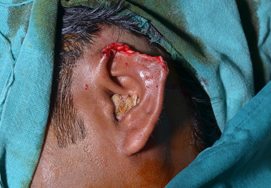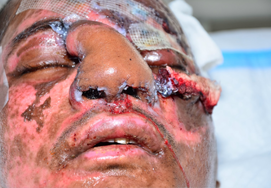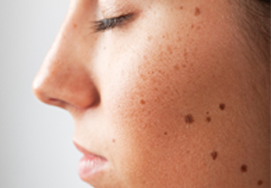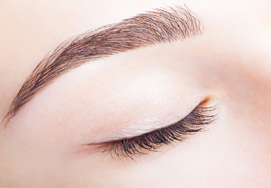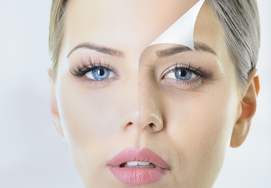Scar, Moles, Wart removal and correction
Indicated in individuals with depressed or more obvious scars, scars which are widened, a keloid scar that is tough and itchy and scars that prevent the movement of the muscles and the joints

- What are scars, moles and warts?
- What are the types of the surgeries?
- Who would be eligible for the surgery?
- How should I prepare for the surgery?
- What happens during the surgery?
- What is the aftercare of the surgery?
- What are the postsurgical considerations?
What are scars, moles and warts?
The presence of defective blemishes on the skin brings down one’s self-confidence. Scars, warts, and moles are such facial defects that are of concern.
Scars can be due to the abnormal wound healing as a result of the accumulation of collagen during the healing process. These scars can be formed due to accidents, surgeries, acne, wound healing
Moles which are regarded as the beauty symbols for ages may be a concern for self-conscious in some. These are the benign growths over the body as a result of melanocyte activation. Moles which are itchy, change their shape and color, and which bleed are of concern as they may be cancerous and need verification by the physician.
Warts are the annoying and painful protrusions on the skin. They may occur due to an infection with human papillomavirus.
What are the types of the surgeries?
Scars cannot be removed completely, but they can be made less visible. The surgical treatments include:
- Steroid injections – For projecting scars
- Surgical scar revision – To reduce the size of the scar
- Laser therapy – To reduce the redness in a scar
- Pressure dressings – To flatten or soften the scar
- Chemical Peel – To treat acne scars or skin blemishes
- Non-ablative laser treatment – To treat minor skin scars
Moles can be treated by different procedures:
- Surgical excision – Cutting the mole and suturing the skin
- Electrosurgery – Removal of the mole by an electrically heated instrument
- Laser surgery – Works best for flat moles
- Cryotherapy – The procedure makes use of liquid nitrogen to remove the moles
Warts generally don’t require any treatment, but may not go away so easily in adults. This requires treatment which can be of various types.
- Chemical treatment – Painting warts with salicylic acid
- Cryotherapy – Freezing warts with liquid nitrogen repeatedly
- Electrosurgery – Performed for large and annoying warts
- Surgical excision – For Visible warts
- Laser treatment – For warts ineffective by other treatments
- Electro-fulguration – Easiest and the best way for common warts with minimal scarring
Who would be eligible for the surgery?
Individuals suitable for the surgical treatment of scars, warts, and moles are those who have not responded to the non-surgical treatment.
The scar treatment is indicated in individuals with-
- Depressed or more obvious scars
- Scars which are widened
- A keloid scar that is tough and itchy
- Scars that prevent the movement of the muscles and the joints
Individuals who had a history of cold sores or active cold sores and chronic health problems are not suitable for the surgery.
How should I prepare for the surgery?
Before any surgery, your surgeon first checks your medical records and health status. You will be instructed on what medicines to be taken and what not. You have to stop smoking and consuming alcohol before 2 weeks of surgery, as it may affect the healing process after surgery.
What happens during the surgery?
Scar correction:
- Steroid injections:
The area to be treated will be cleaned with an antibacterial agent. The surgeon injects the steroids like cortisone to smoothen the scars and prevent them from projecting. - Surgical scar revision:
You will be given general or local anesthesia. Your surgeon will excise the scar and then the absorbable stitches are laid deep down into the skin layers to prevent the scar from spreading. The deeper stitches keep the skin intact while the superficial stitches are removed. You may have to limit activity and wear surgical micro pore tape or steri-strips over the scar for a few months. This helps to keep the scar supple and narrow. - Laser resurfacing:
You will be given a local anesthetic. The surgery which is also known as the laser peel or laser vaporization uses the laser beam to treat the tissue abnormality. Your surgeon will remove the skin and passes the laser beam to burn the epidermis, heat the dermis, thus making way for the new skin to form smoothly. - Chemical peeling:
The surgeon uses the chemical peels like phenol, trichloroacetic acid, and alpha hydroxy acids to treat the skin imperfections. The surgeon pre-treats the skin with tretinoin before applying chemicals to prepare the skin for the procedure. In people with darker skin complexion, the skin should be prior treated with hydroquinone preparations. Then, the surgeon applies the peeling material evenly over the scar, leaves it for a period of time, and then stops the chemical treatment by applying a neutralizing substance. Sunscreen lotions should be used before and after the chemical peeling. - Non-ablative treatment:
The surgeon uses a very low beam of laser light, which penetrates the skin without causing any damage. The heat is applied onto the skin as fractionated deep columns. The surgeon may perform multiple sessions to mask the scar.
Moles treatment:
- Cryotherapy:
The surgeon may or may not use local anesthesia. Liquid nitrogen is applied or sprayed over the area and left as such for some time. Treatment continues for 3-4 times, with a gap of 1-3 weeks in between. - Surgical removal:
The surgeon uses a local anesthesia in the procedure. The surgeon uses a machine called as radio surgitron machine or a knife to shave the mole flat. There is no blood loss after the surgery. You may not have any stitches or scar formation after the surgery. 3. Laser treatment:
The surgeon first numbs the area with local anesthesia. Then, the laser beam is used to remove the mole. The pigment gradually fades by the body’s natural healing process after the surgery. - Electro surgery:
Also called as the electrocautery, the surgery is performed with a heated blade or a needle. Local anesthesia is given; then the heated blade is placed on the mole, which gets burned. Then, the surgeon removes any remaining parts of the mole. Later, the wound is bandaged, and the painkillers are administered.
Warts treatment:
- Cryotherapy:
The surgeon may or may not use local anesthesia. Liquid nitrogen is applied or sprayed over the area and left as such for some time. Treatment continues for 3-4 times, with a gap of 1-3 weeks in between. - Electrosurgery:
Also called as the electrocautery, the surgery is performed with a heated blade or a needle. Local anesthesia is given; then the heated blade is placed on the wart, which gets burned. Then, the surgeon removes any remaining parts of the wart. Later, the wound is bandaged, and the painkillers are administered. - Surgical excision
Your surgeon numbs the area with a local anesthetic; then removes the wart by an electric needle. Pain medications are indicated after the surgery. - Laser therapy
The surgeon first numbs the area with local anesthesia. Then, the laser beam is used to remove the wart. The pigment gradually fades by the body’s natural healing process after the surgery. - Electrofulguration:
The electrosurgery performed to treat superficial warts is the fulguration.
What is the aftercare of the surgery?
Skin inflammation may be present after the surgery. You may be prescribed painkillers and certain medications after the surgery. You should avoid exposure to the sun, as it may cause scarring on the skin. You can use sunscreen lotions of SPF above 30. The treated area should be well-moisturized. You should avoid sleeping on the treated area till it heals as it may lead to swelling.
What are the postsurgical considerations?
The surgeries performed for treating the scars, moles, or warts pose certain risks after the surgery, such as:
- Scarring
- Swelling
- Reddening
- Infection
- Re-occurrence
- Unusual scarring
The risks can be overcome with proper care and a timely post-surgical visit to the surgeon.


